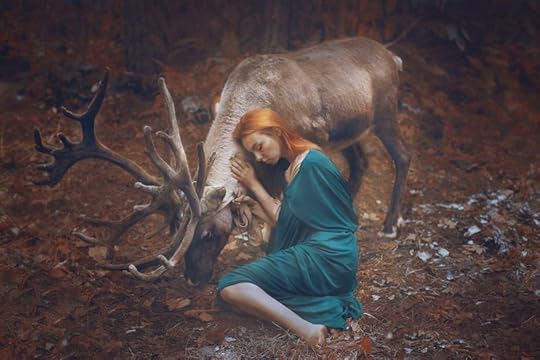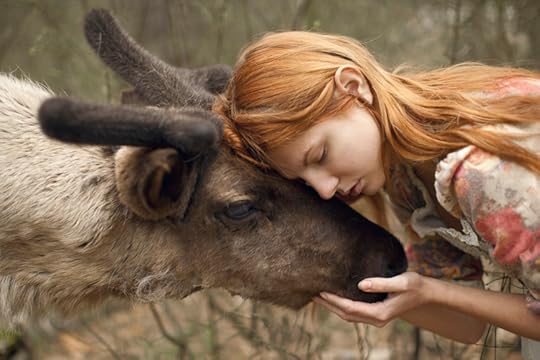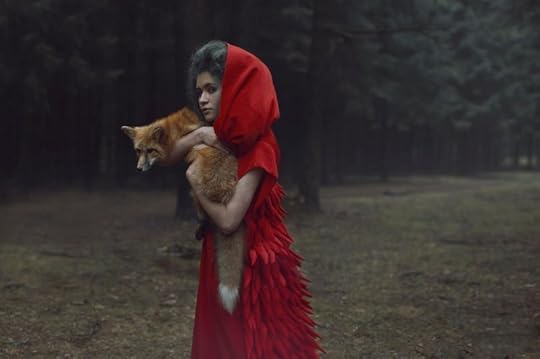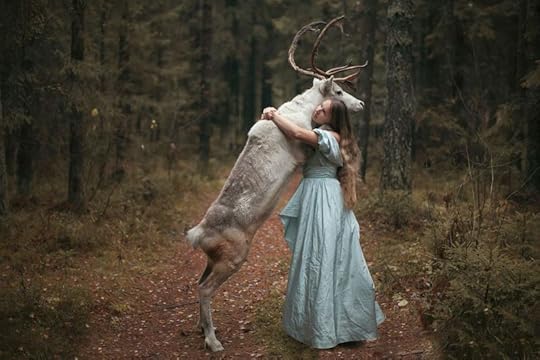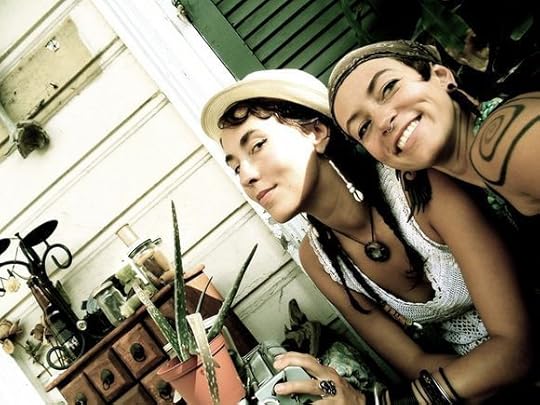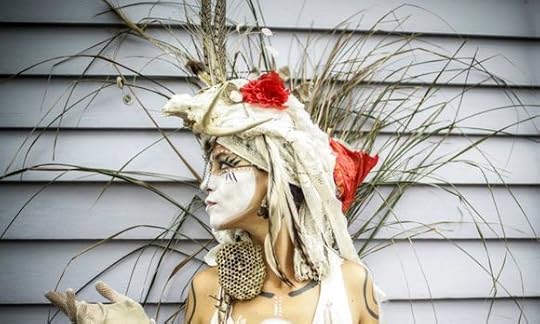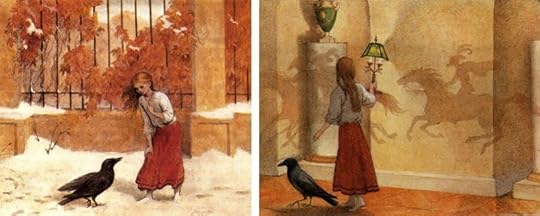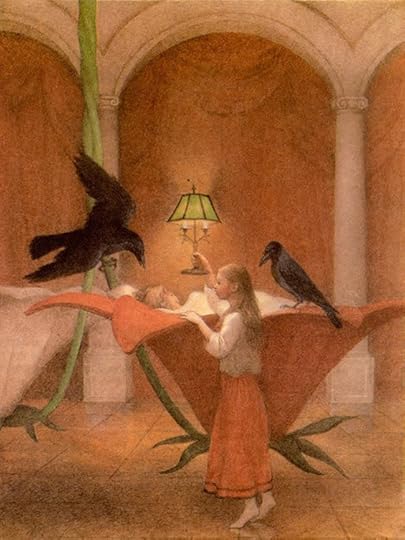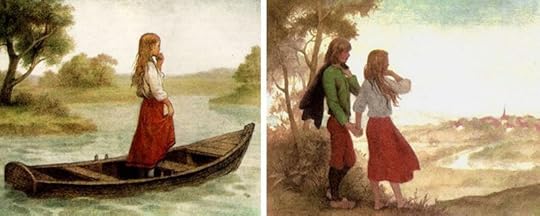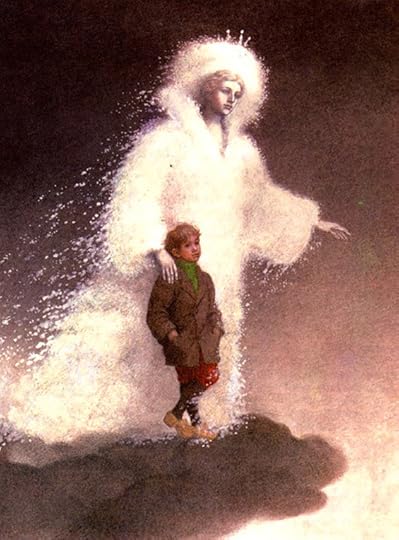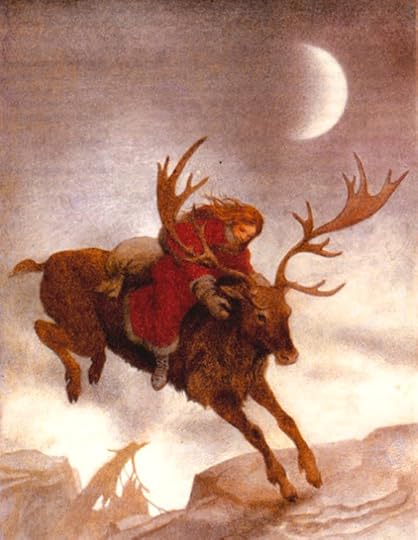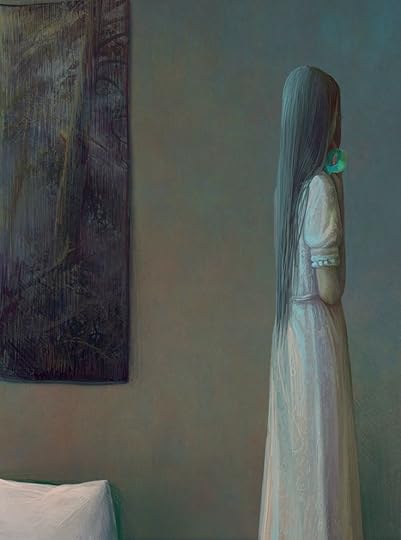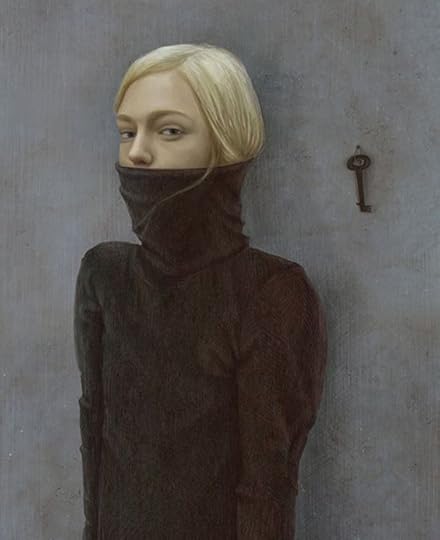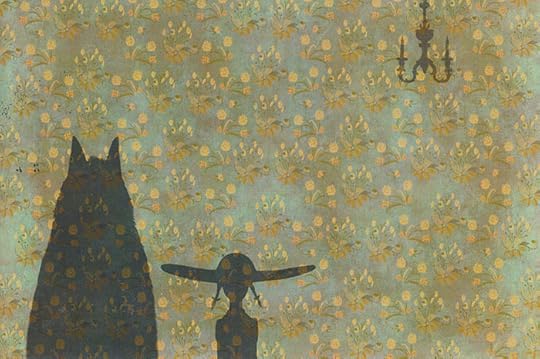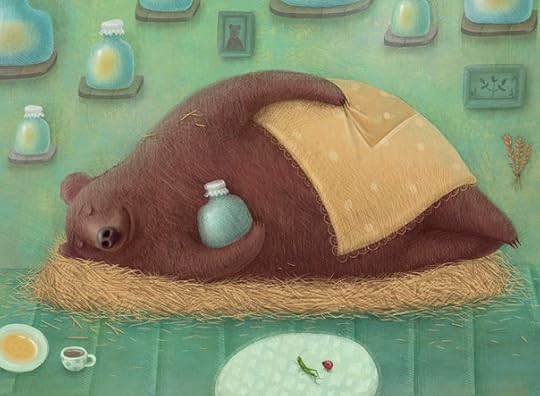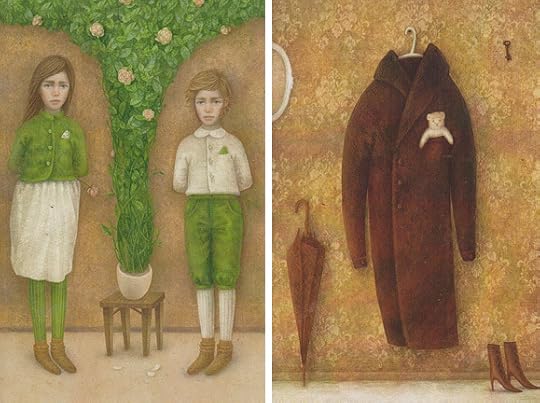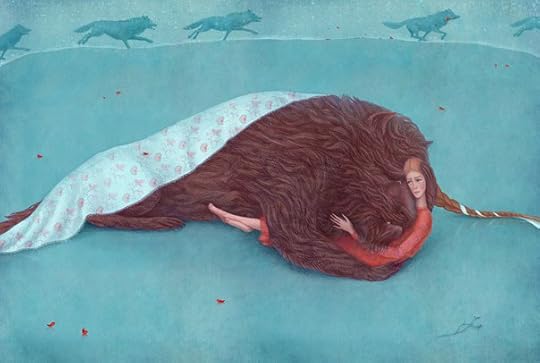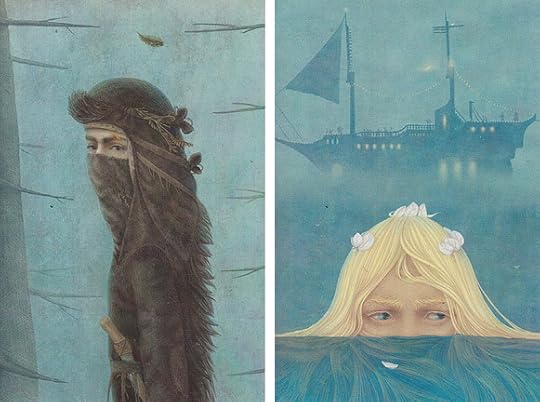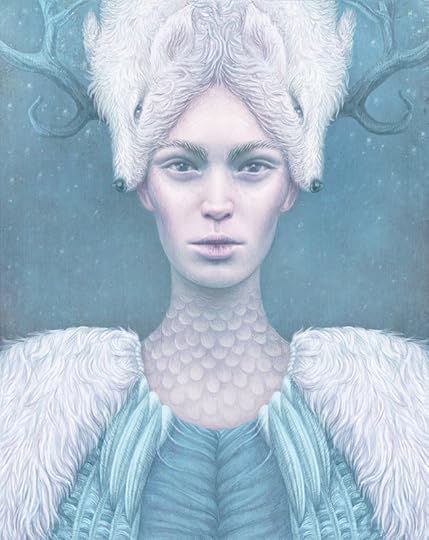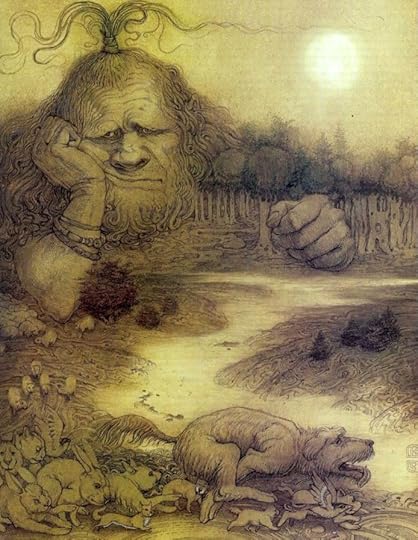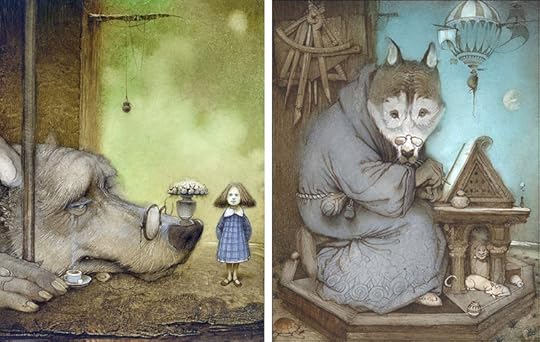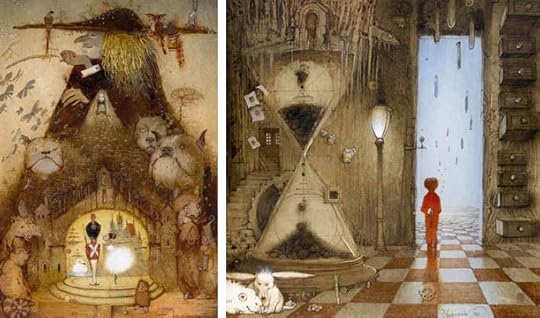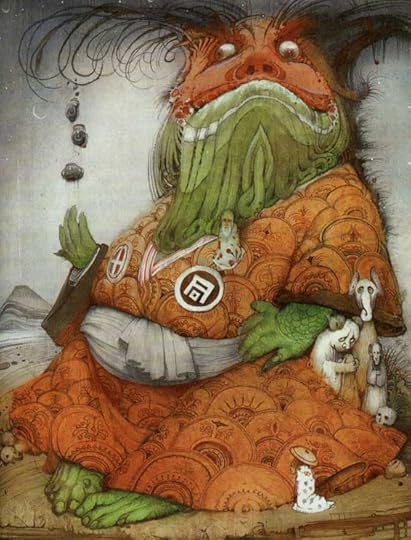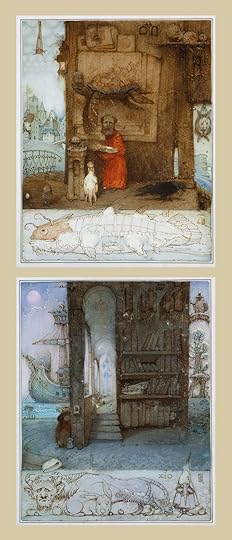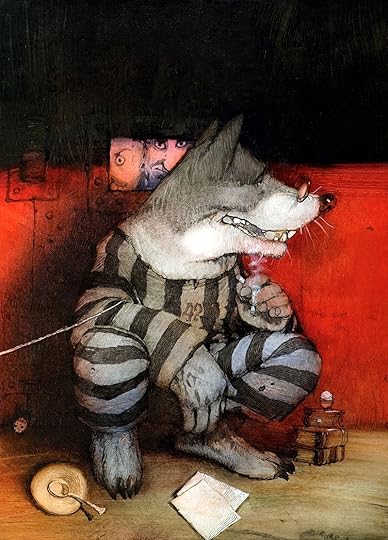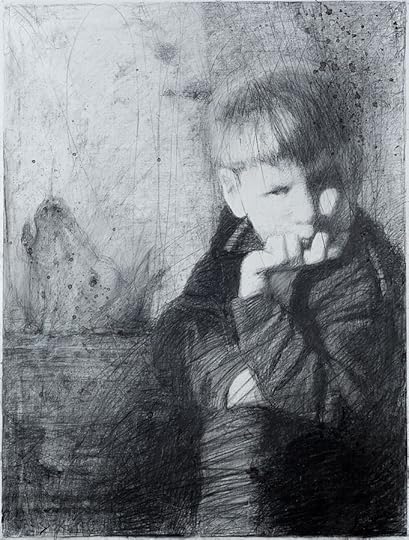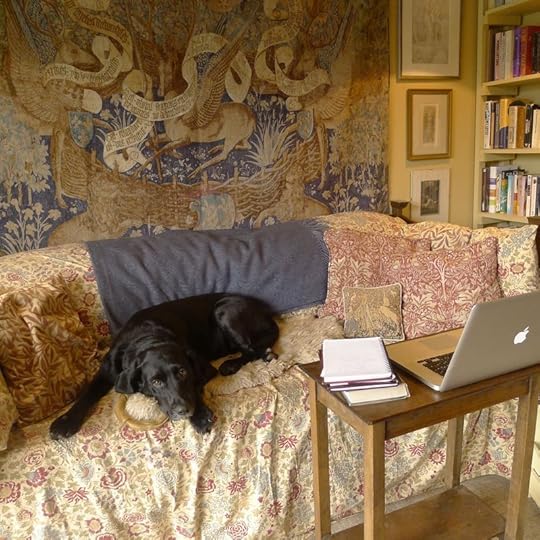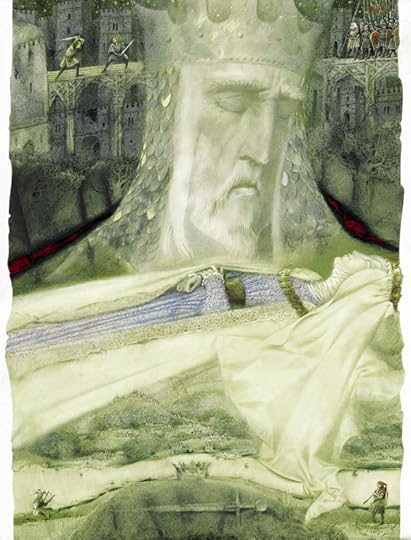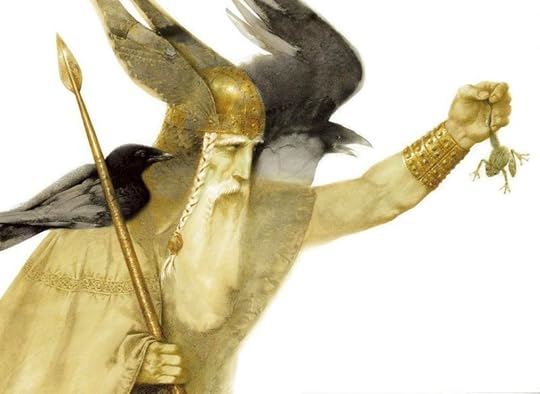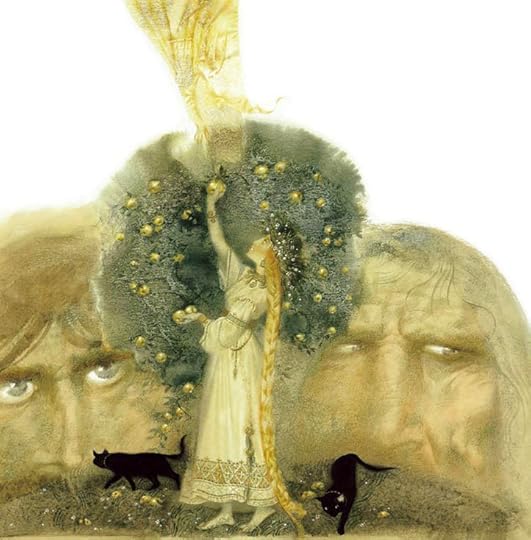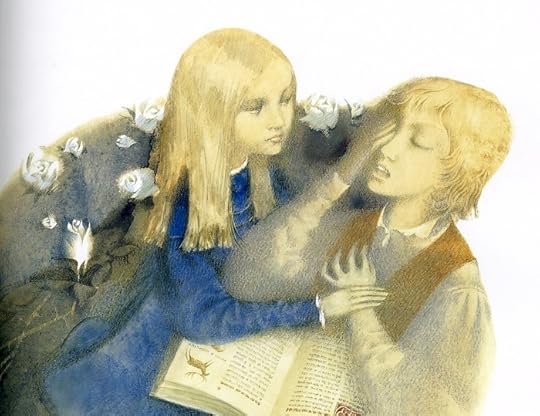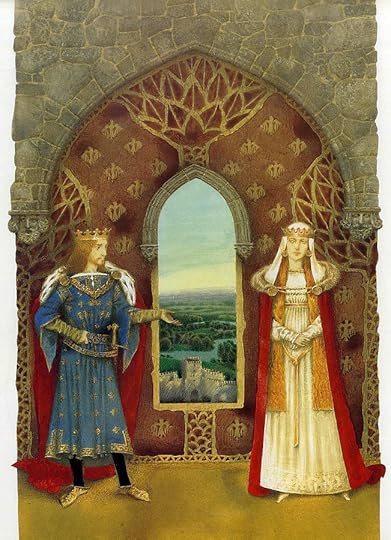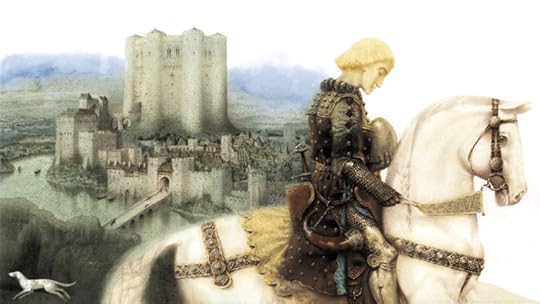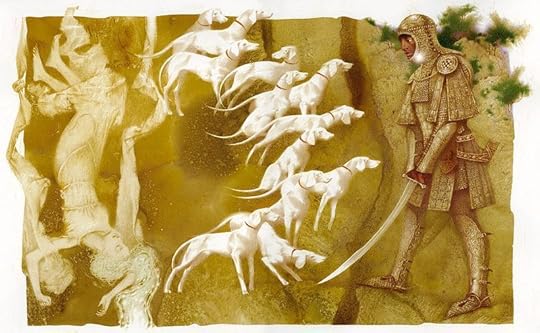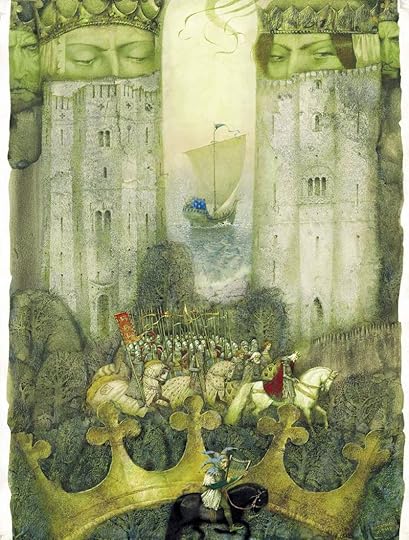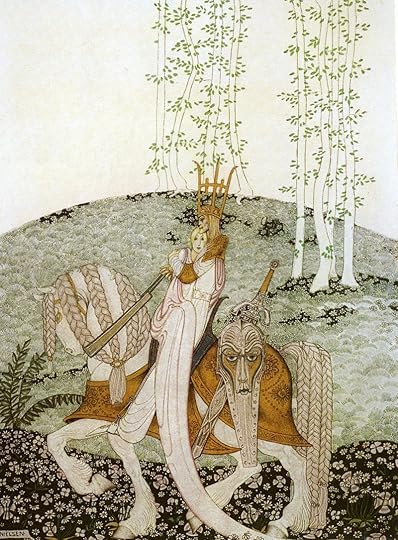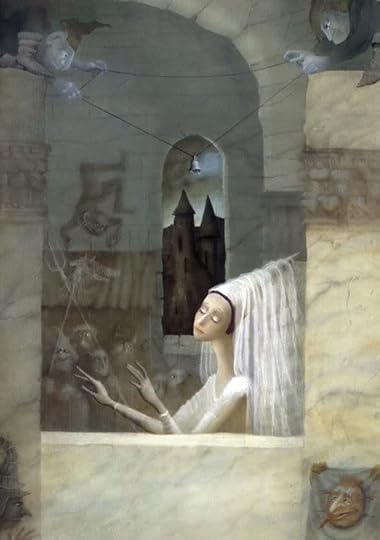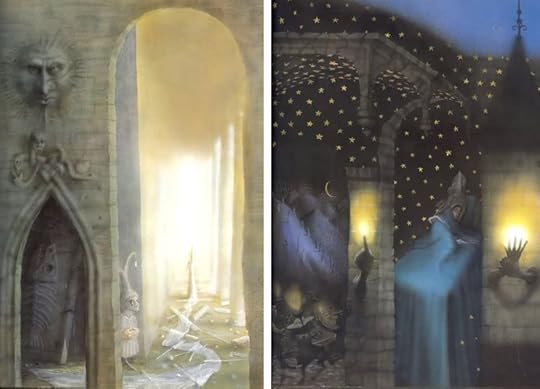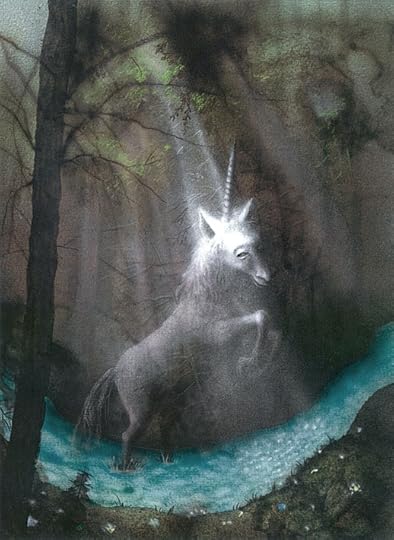Terri Windling's Blog, page 145
February 10, 2015
"Into the Woods" series, 36: The Speech of Animals
Many an old story begins with the words, "Long ago, when animals could speak...," invoking a time when the boundary lines between the human and the animal worlds were less clearly drawn than they are today, and more easily crossed. Animals play a vibrant role in the earliest stories from around the globe: tales of animal gods and guardians, animal nurses and paramours, animal thieves and tricksters, animal teachers and ancestors. In ancient carvings and pictographs we find numerous representations of the animal kingdom, as well as images of men and women with animal characteristics: stag-men, bird-men, lion-women, 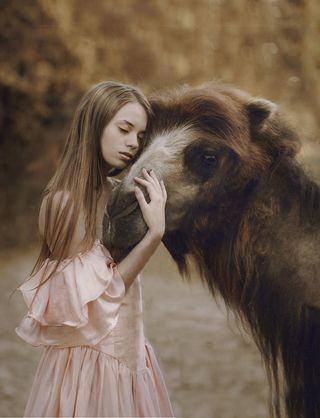 snake- women, and other beings both beautiful and monstrous. Shamans and wizards were said to be able to shape-shift into animal form, attaining these powers after spending some time living with animals in the wild -- sleeping in wolf dens, traveling with reindeer, learning their speech and their secrets.
snake- women, and other beings both beautiful and monstrous. Shamans and wizards were said to be able to shape-shift into animal form, attaining these powers after spending some time living with animals in the wild -- sleeping in wolf dens, traveling with reindeer, learning their speech and their secrets.
Folk tales from around the world tell us that the animals communicate with each other in a language unknown to men and women -- or else in a language that used to be known to us, but now is lost. The stories also tell of human beings who understand the speech of animals. Some are born with this ability, while others obtain it through trickery, or magic, or as a gift from the animals themselves, a reward for an act of kindness. In both Europe and Asia, snakes and dragons are closely associated with animal speech. In Norse myth, Siegfried tastes dragon blood and then understands the language of birds; in Arabian myth, one obtains this power by eating the heart of a snake. In eastern Europe, the snake must be white; in France it must be black or green; in Greece, the snake must merely lick the ears of the human supplicant. In some tales, humans blessed with the gift of understanding animal speech must never reveal their possession of it -- and often they lose it again when a careless word or laughter betrays them. Madness and the ability to speak the language of animals has often been linked, particularly in shamanic tales where the line between madness and oracular wisdom is blurred.
In tribal traditions from all around the globe, animals are believed to have the power to cause or cure certain illnesses. Animal and their spirits are propitiated through gifts, prayers, song, dance, shamanic rituals, and the use of totemic objects. (I once watched a Tohono O'Odham friend sing to a wild hawk in the mountains near Tucson, slowly drawing the hawk within arms' length of where he knealt. The song, he said, was "hawk 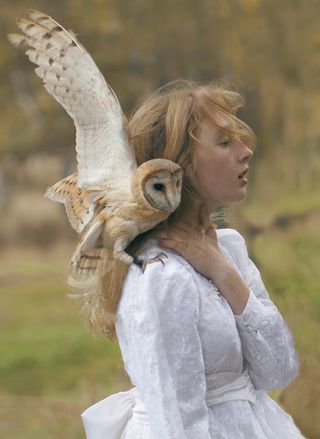 medicine," passed down in his family.) Animal tales are often told not just as simple entertainments but as teaching stories, or as part of healing rites intended to foster a proper relationship between humankind and the natural world. Today, in our rapidly urbanizing society, this teaching/healing aspect of myth -- and, by extension, of Mythic Arts -- has become more important than ever, while we stare ecological disaster in the face and while more and more animal species fall under threat of extinction.
medicine," passed down in his family.) Animal tales are often told not just as simple entertainments but as teaching stories, or as part of healing rites intended to foster a proper relationship between humankind and the natural world. Today, in our rapidly urbanizing society, this teaching/healing aspect of myth -- and, by extension, of Mythic Arts -- has become more important than ever, while we stare ecological disaster in the face and while more and more animal species fall under threat of extinction.
Animal myths remind us that we don't own this earth but share it with others -- with our animal "brothers" and "cousins," as many tribal groups have named them. Some early Greek philosophers argued that animals, too, could reason and love, and thus were no less favored by the gods than human beings. To insist that man was the lord of all, they said, was the height of human arrogance. The Book of Job instructs us to "ask the beasts and they shall teach thee; and the Fowls of the air, and they shall teach thee; or speak to the Earth, and it shall teach thee," while the Qu'ran says, "there is no beast on earth nor bird which flyeth with its wings but the same is a people like unto you."
In The Spell of the Sensuous, David Abram writes of the importance of re-learning the language of animals and re-telling the stores that bring us back into a balanced relationship with the natural world. "Human language," he notes, "arose not only as a means of attunement between persons, but also between ourselves and the animate landscape. The belief that speech is a purely human property was entirely alien to those oral communities that first evolved our various ways of speaking, and by holding to such a belief today we may well be inhibiting the spontaneous activity of language. By denying that birds and other animals have their own styles of speech, by insisting that the river has no real voice and that the ground itself is mute, we  stifle our direct experience. We cut ourselves off from the deep meanings in many of our words, severing our language from that which supports and sustains it. We then wonder why we are often unable to communicate even among ourselves."
stifle our direct experience. We cut ourselves off from the deep meanings in many of our words, severing our language from that which supports and sustains it. We then wonder why we are often unable to communicate even among ourselves."
David goes deeper into this premise in his book Becoming Animal, which explores our role in the biological/ecological kinship web that links us with other animal species; and, indeed, with all organic life. "How monotonous our speaking becomes when we speak only to ourselves!" he writes. "And how insulting to the other beings – to foraging black bears and twisted old cypresses – that no longer sense us talking to them, but only about them, as though they were not present in our world…Small wonder that rivers and forests no longer compel our focus or our fierce devotion. For we walk about such entities only behind their backs, as though they were not participant in our lives. Yet if we no longer call out to the moon slipping between the clouds, or whisper to the spider setting the silken struts of her web, well, then the numerous powers of this world will no longer address us -- and if they still try, we will not likely hear them.”
The late naturalist John Hay expressed a similar sentiment in his influential book A Beginner's Faith in Things Unseen: “In a society so estranged from animals as ours," he said, "we often fail to credit them with any form of language. If we do, it comes under the heading of communication rather than speech. And yet, the great silence we have imposed on the rest of life contains innumerable forms of expression. Where does our own language come from but this unfathomed store that characterizes innumerable species?"
While scientists ponder animal consciousness; and nature writers, the role of animals in our lives; artists, too, can strengthen the relationships between humans, animals, and the natural world...especially in the Mythic Arts field, where we daily work with the world's great wealth of myth, folklore, and ancient sacred stories.
 There are a number of wonderful novels, for example, with animal/human relationships at their core: Second Nature by Alice Hoffman, Power by Linda Hogan, The Antelope Wife by Louise Erdrich, Bear by Marian Engle, Medicine Road by Charles de Lint, The Animal Wife by Elizabeth Marshall Thomas, Daughter of the Bear King by Eleanor Arnason, The Fox Woman by Kij Johnson, The Jaguar Princess by Clare Bell, East by Edith Pittou, The Book of Atrix Wolfe by Patricia McKillip, Brother to Dragons, Companion to Owls by Jane Linskold, and many others. Whether set in a distant time, or a magical realm, or the modern world we live in, these novels draw from the oldest of stories to remind us of what we once surely knew (at least within our dreams): how to run the wolves; sleep with the bears; converse with the birds, foxes and deer; and reclaim our animal selves.
There are a number of wonderful novels, for example, with animal/human relationships at their core: Second Nature by Alice Hoffman, Power by Linda Hogan, The Antelope Wife by Louise Erdrich, Bear by Marian Engle, Medicine Road by Charles de Lint, The Animal Wife by Elizabeth Marshall Thomas, Daughter of the Bear King by Eleanor Arnason, The Fox Woman by Kij Johnson, The Jaguar Princess by Clare Bell, East by Edith Pittou, The Book of Atrix Wolfe by Patricia McKillip, Brother to Dragons, Companion to Owls by Jane Linskold, and many others. Whether set in a distant time, or a magical realm, or the modern world we live in, these novels draw from the oldest of stories to remind us of what we once surely knew (at least within our dreams): how to run the wolves; sleep with the bears; converse with the birds, foxes and deer; and reclaim our animal selves.
Ama Eaton, the aunt of the young narrator of Linda Hogan's luminous novel Power, says "that animals are the pathway between humans and gods. They are one step closer to the true than we are. She says skin was never a boundary to be kept or held to; there are no limits between one thing and another, one time and another. The old stories live in the present. She believes in stars and their gifts, that the wind speaks in intelligent trees that look bright as bonfires to eyes that are open. For Ama the other world is visible. It lives beside us in trees and stone. She can see it, like a path of light across water, and hear it in the swamps at night.... And she believes her faintest move or thought is governed not only by spirits, but by the desires and dreams of animals who are people like ourselves, in different skins."
Stories are what we are, states Albert, a Trickster character in Charles de Lint's "Coyote Stories" (from his collection Moonlight and Vines). "Just stories. You and me, everybody, we're a set of stories, and what those stories are is what makes us what we are. Same thing for whites as skins. Same thing for a tribe and a city and a nation and the world. It's all those stories and how they braid together that tells us who we are and what and where we are."
''Stories nurture our connection to place and to each other," naturalist Susan J. Tweit agrees (in Walking Nature Home). "They show us where we have been and where we can go. They remind us of how to be human, how to live alongside the other lives that animate this planet....When we lose stories, our understanding of the world is less rich, less true.''
The magical imagery today is by the Russian surrealist photographer Katerina Plotnikova, whose work often evokes the old stories of Russian fairy tales and world myth. Go here for a interview with the artist (where she talks about the animals she works with) and to see more of her work.
Some previous posts on animal/human relationships: "Wild Neighbors," "The Peace of Wild Things,""Animal Stories," "Animal Stories, continued," and ""Word Magic." And I recommend Stassa Edwards' article on talking animals, "From Aesop to doge," in Aeon Magazine.
February 8, 2015
Tunes for a Monday Morning
This week, music from Rising Appalachia, as I'm sure I'm not the only one in the Mythic Arts community who loves their music...
Rising Appalachia is an American "newgrass" band headed by two sisters, multi-instrumentalists Choe Smith and Leah Smith (a.k.a. Leah Song), from Georgia. Their music mixes Southern roots music with original songs, played on a wide variety instruments. They've released five standard albums and two digital albums since 2005.
Above, the video for "Swoon" from their 2010 album The Sails of Self.
Below: The video for "SuNu," from the same album. The Smith sisters divide their time between the southern Appalachian region (with its deep folk music tradition) and Louisiana (with its vibrant Creole culture), and this song contains influences from both places.
Below:
A non-traditional version of the traditional Southern gospel song "I'll Fly Away." You'll find it on two of their albums: The Sails of Self (2010) and Filthy Dirty South (2012).
And last:
"Across the Blue Ridge Mountains," an Appalachian folk song that I particularly love as I have ancestral roots in those mountains. (My biological-father's people have lived there for many, many generations.) This song, too, is on The Sails of Self.
February 5, 2015
Passing it on
"After nearly a dozen years writing realism for adults, I felt an indefinable, irresistible urge to write a fantasy for young people. Not for any specific child; but rather, because I believed it could be a powerful and serious literary form. It turned out to be the most creative and liberating experience of my life, letting me draw on my own deepest feelings far more than I had ever done.
"Since then, my books have been children's fantasies -- a term I don't find very expressive or descriptive. In the same way I see no essential difference in writing for adults or young people, I see no conflict between realism and fantasy. Both try to illuminate human relationships, conflicts, and moral dilemmas. I do admit that I much prefer fantasy. To me, it has the emotional strength of a dream, it works directly on our nerve endings, whatever age we happen to be, touching heights and depths not always accessible through realism. In fantasy, my concern is how we learn to be real human beings. It's a continuing process."
- Lloyd Alexander (1924-2007, author of The Chronicles of Prydain)
"There were always tales passed from mother to daughter, father to son. Down through the generations they came, so that we would never forget that place, that magic, that elemental and awesome power that abided in our forbears. In each generation the power of the tales rests with us, the storytellers. I weep, I cry with joy, I exult in the God-power of the words.
"And so I have tried to pass them on to another generation, to keep alive the mortal power of our earlier selves, even as the world changes and dies, sleeps and awakes anew to the force that gives life to our souls. So that some child can hear the tales and find them awakened in herself to pass on to yet another generation. "
- Evangeline Walton (1907-1996, author of the magnificent Mabinogion Tetrology)
The beautiful paintings for Hans Christian Andersen's The Snow Queen above could easily have come from the Golden Age of book illustration at the dawn of the 20th century...but fact they are by a contemporary Russian artist, Anastasia Arkhipova.
Arkhipova was born into a family of artists in Moscow, studied at Moscow State Academy of Fine Arts, and has illustrated many books for publishers in Russia and abroad. In addition to The Snow Queen, she has also illustrated Andersen's The Princess and the Pea, The Tinderbox and The Steadfast Tin Soldier; Moliere's The Bourgeois Gentleman and Tartuffe; Cervantes' Don Quixote; Goethe's The Sorrows of Young Werther; and editions of fairy tales from the Brothers Grimm and from Russian writers. She is a member the Russian Academy of Art, where she has the title of "Honoured Artist of Russia," and has won many international awards.
Today is the last in our series of posts spotlighting just a few of the many fine book artists of Russia and other lands of the East. Have a good weekend, gentle Readers, and I'll see you again next week.
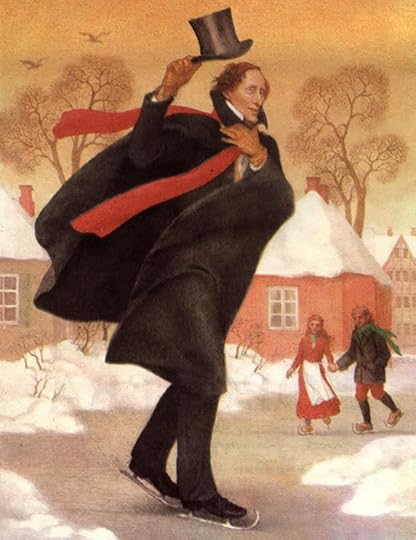 I regret that the picture reproduction here isn't of the best quality and doesn't do full justice to Arkhipova's art, but there is only a small amount of her work available online.
I regret that the picture reproduction here isn't of the best quality and doesn't do full justice to Arkhipova's art, but there is only a small amount of her work available online.
February 4, 2015
We are storytelling animals
"For me, the literature of the fantastic began with storytelling. After all, humans are storytelling animals. Only we now do most of our storytelling on the page. I am obsessed with stories -- my own and other people's. I want my music and art to tell stories as well. What happened next? is probably the first sentence I ever spoke. And even if it isn't, I can certainly pretend it is since both of my parents are no longer around to contradict me.
"Everyone in the family was a storyteller. Some people called them liars. But the Yolen gene is a storytelling gene. And so it goes. My daughter writes, one son is a musician whose songs tells stories, the other a photographer who captures stories in his lens. When I die, I want my tombstone to read: She wrote many good books and one great one. I will let the readers of that argue over which book I mean. That will force them to read the stories -- and tell their own."
- Jane Yolen (author of Briar Rose)
"My family finds me a nuisance when I'm writing a book. It isn't just that I get absent-minded and forget meals. I laugh. In the early days, when I was writing The Ogre Downstairs, I sat by myself and laughed so much that my children kept coming and asking if I was alright. Later, they got used to it and simply tested me to make sure I'd heard what they said. I became very good at replaying a conversation I hadn't actually known I'd had.
"Now, when the children have long ago grown up, my husband still gets astonished when I laugh as I write. When I was writing Howl's Moving Castle and nearly fell off the sofa in my mirth, he said, 'You can't be making yourself laugh!' I said, 'No, it's this book that's making me laugh.' That is because, when a book is going as it should, it doesn't feel as if I'm doing it. It takes its own way, and people in it do things I don't expect. This is true however a book comes to me. Charmed Life arrived in my head almost as a complete book, but it was still unexpected. With Archer's Goon, on the other hand, I had almost no idea what was going to happen from one page to the next -- which made it very unexpected.
"But I don't always laugh. Some books, like the Dalemark Quartet, have kept me on the edge of my seat, barely able to breathe. Others, like Fire and Hemlock and Dogsbody, have wrung my heart as I wrote them and taught me things I never thought I knew about people and their feelings.
"I learn things as I write, you see. This is why I enjoy it so much."
- Diana Wynne Jones (1934-2011, author of The Chronicles of Chrestomanci)
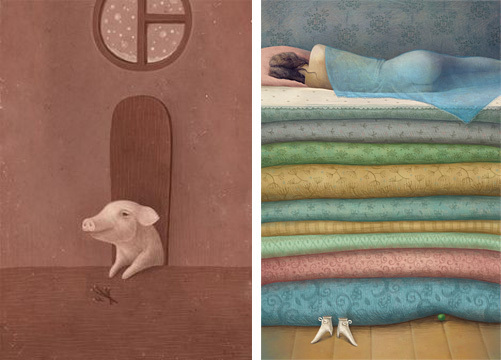
"If I wanted to know where my ideas came from I wouldn't be an imaginative writer, I'd be a scientist. My whole life has been spent daydreaming and out of those ideas and daydreams come stories. It doesn't interest me where daydreams come from, what interests me is helping them grow and blossom into something different, some strange and wonderful tale of mystery and magic. Then again, if you ask a few scientists where they got their ideas from they might tell you they spent most of their life daydreaming and out of those daydreams came something different, some strange and wonderful discovery or invention."
- Garry Kilworth (author of The Fabulous Beast)
"My ideas usually come not at my desk writing but in the midst of living."
- Anaïs Nin (1903-1977, author of The Diaries of Anaïs Nin)
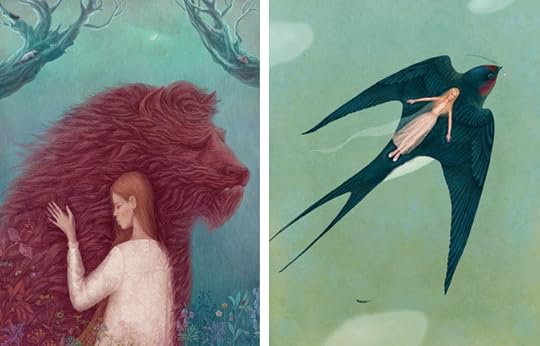
The highly distinctive, very charming art today is by Galia Zinko, a young painter and designer in Kharkiv, Ukraine, who has illustrated The Little Mermaid, The Snow Queen, Beauty and the Beast, Little Red Riding Hood, Thumbelina, and other fairy tale classics. To see more of her lovely work, visit her VK blog, her portfolio page on illustrators.ru, and her artist's page on behance.net. You can also watch a short trailer for her book Красная шапочка here.
February 3, 2015
The fantastic imagination
"Technically, all fiction is fantasy. It hasn't happened in 'real life'; it has been invented. But there is a divide between fantastic literature and other, more realistic fiction.
"Most fiction is like a pane of glass, a window that we look through to see another view of the world outside ourselves. It is not a tale of real events, but it looks real. Fantastic literature is not merely not-real, it is aggressively not-real. The events in a fantasy novel are not simply things that have not happened; they are things than cannot happen. Dragons and unicorns exist only as metaphors, and the daylight world suffers from a serious shortage of magic swords and flying carpets.
"Thus, fantasy does something different from realistic mainstream and historical fiction. Fantasy takes the window and coats the outside with the silver of wondrous impossibilities....And the window becomes a mirror that reflects both ourselves and all the things in the shadows behind us, things we have tried to turn our backs on. More: In the best tradition of magic mirrors, fantasy reflects not only ourselves and our shadows, but the truth of our hearts.
"I think this is one of the reasons some people fear fantasy."
- Patricia C. Wrede (author of Dealing With Dragons)
"Fantasy is the oldest kind of fiction, and though it's forever finding new forms, it doesn't change in essence. Even through the flood of trite trilogies and formula fantasoids of the last twenty years, the real stuff keeps being written, published, and read. Not even capitalism can kill the imagination.
"Fantasy is the language of the inner self. I will claim no more for fantasy than to say I personally find it the appropriate language in which to tell stories to children -- and others. But I say that with some confidence, having behind me the authority of a very great poet, who put it much more boldly. 'The great instrument of moral good,' Shelly said, 'is imagination.' "
- Ursula K. Le Guin (author of the "Earthsea" series)
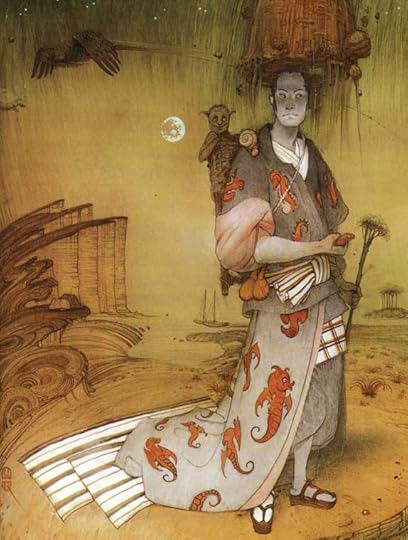
"The world itself is so astonishing that it seems strange some of us should be driven to invent creatures and stories even more fantastical than those around us. As a writer, I'm a jack-of-all-trades: journalist, novelist, playwright, screenwriter. But whenever my imagination can run free, unencumbered by facts or commissions, the stories that it brings me always seem to be fantasies, generally of a sort published these days as novels for children. Perhaps writers of my kind are able to tell the truth only through metaphor. Or perhaps we're just greedy, wanting always not only to look in the mirror but to step through it, not only to live today, but to fly in and out of yesterday and tomorrow. 'This is how life is,' says the realistic novel. The fantasy says, 'Yes, but what if -- ?' So the writer picks up his pen and begins. 'In a hole in the ground there lived a hobbit....' "
- Susan Cooper (author of The Dark is Rising)
"What I find especially compelling is that ambiguous, murky, and dangerous region where the very things we fear the most are also those we secretly desire. I write fantasy in search of knowledge lost in childhood and the sinister clarity of dreams."
- Lisa Tuttle (author of The Mysteries)
The wonderfully whimsical art today is by Kirill Chelushkin, who trained as an architect before turning to book illustration and fine art. Born in Moscow, he divides his time between Moscow and Paris, and exhibits his paintings, drawings, and conceptual art internationally. He also runs his own publishing house, Chelushkin Handcraft Books.
A brief interlude with the Hound
This picture is for the reader from Berlin who wrote to say that although he's loved the book illustrations posted here over the last couple of weeks, he's been missing Tilly's presence. "Being city-bound myself," he writes, "I take great pleasure in my vicarious walks through the Devon countryside. I hope you are both all right." In fact, Tilly has been a bit under the weather (like me), which is why there have been so few Devon photographs of late. But we're both on the mend, and we'll be back to our woodland wanderings soon, I promise. (And Tilly's tumblr page will resume too.)
In meantime, she's curled up against me as I write this, purring. Yes, she actually purrs. Before Howard and I married, I'd only ever lived with cats -- but he was allergic to them, and crazy about dogs, so he was fond of quoting a line from the Proclaimers' song Let's Get Married: "You can get a cat just as long as it barks." Instead we got a dog who purrs, which makes both of us very happy.
February 2, 2015
Written in the language of dreams
George R.R. Martin on why we read fantasy:
"The best fantasy is written in the language of dreams. It is alive as dreams are alive, more real than real...for a moment at least...that long moment before we awake.
"Fantasy is silver and scarlet, indigo and azure, obsidian veined with gold and lapis lazuli. Reality is plwood and plastic, done up in mud brown and olive drab. Fantasy tastes of habañeros and honey, cinnamon and cloves, rare red meat and wines as sweet as summer. Reality is beans and tofu, and ashes at the end. Reality is the strip malls of Burbank, the smokestacks of Cleveland, a parking garage in Newark. Fantasy is the towers of Minath Tirith, the ancient stones of Gormenghast, the halls of Camelot. Fantasy flies on the wings of Icarus, reality on Southwest Airlines. Why do our dreams become so much smaller when they finally come true?
"We read fantasy to find the colors again, I think. To taste strong spices, and hear the songs the sirens sang. There is something old and true in fantasy that speaks to something deep within us, to the child who dreamed that one day he would hunt the forests of the night, and feast beneath the hollow hills, and find a love to last forever somewhere south of Oz and north of Shangri-La.
"They can keep their heaven. When I die, I'd sooner go to Middle Earth."
The art today is by the award-winning Belarusian painter and illustrator Pavel Tatarnikov. He was born in Brest, studied at the Belarusian Academy of Arts, and now lives and works Minsk. His many publications include The Song of Igor's Campaign, The Princess in the Underground Kingdom, The Knights and Architects of Grodno, Arthur of Albion, The Rhinegold, King Lear, The Seven Wonders of Belarus, The Snow Queen, Beauty and the Beast, and White Russian History in Legends. Go here and click on each of the book covers to see the gorgeous illustrations within.
February 1, 2015
Tunes for a Monday Morning
Today: Inna Zhelannaya, a wonderful singer-songwriter who combines Russian folk music with the rhythms of rock, jazz, trance, and electronica. Zhelannaya studied music in Moscow and the Republic of Kalmykia, and fronted the folk-rock band The Farlanders before going solo. Her albums include Zima, Kokon, and Winter in Moscow (with Sergey Starostin and Sami "yoik" singer Mari Boine).
Above: "Tatar," performed by Zhelannaya and her band in 2013.
Below: "Ivan," performed by Zhelannaya with Russian folk singer Pelageya Sergeyevna Khanova in 2008.
Below:
"Who's Gonna Cover Us," performed by Zhelannaya and Pelageya.
And to end with:
"Rusalki [Russian water nymphs or mermaids]," a song best described as folkloric trance dance.
If you'd like a little more folk-inspired music from Russia this morning, try "Christ is Risen," a very old folk hymn performed by Russian folk stalwart Sergey Starostin, with the vocal duo Once Upon a Time; and "Lizard," Russian folk hip-hop (honestly) from the Ivan Kupala band.
Fairy Tale Art for a Monday Morning
Over on the Brain Pickings blog, Maria Popova has posted classic fairy tale art by the great Danish book illustrator Kay Nielsen (1886-1957). You can see it here.
And you can read about Nielsen's remarkable but tragic life here, in the Journal of Mythic Arts archives.
January 29, 2015
Dreaming awake
"I write fantasy because it's there. I have no other excuse for sitting down for several hours a day indulging my imagination. Daydreaming. Thinking up imaginary people, impossible places. Imagination is the golden-eyed monster that never sleeps. It must be fed; it cannot be ignored. Making it tell the same tale over 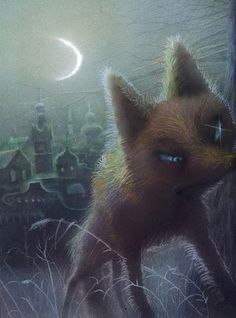 again makes it thin and whining; its scales begin to fall off; its fiery breath becomes a trickle of smoke. It is best fed by reality, an odd diet for something nonexistant; there are few details of daily life and its broad range of emotional context that can't transformed into food for the imagination. It must be visited constantly, or else it begins to become restless and emit strange bellows at embarrassing moments; ignoring it only makes it grown larger and noisier. Content, it dreams awake, and spins the fabric of tales. There is really nothing to be done with such imagery except to use it: in writing, in art. Those who fear the imagination condemn it: something childish, they say, something monsterish, misbegotten. Not all of us dream awake. But those who do have no choice." - Patricia A. McKillip
again makes it thin and whining; its scales begin to fall off; its fiery breath becomes a trickle of smoke. It is best fed by reality, an odd diet for something nonexistant; there are few details of daily life and its broad range of emotional context that can't transformed into food for the imagination. It must be visited constantly, or else it begins to become restless and emit strange bellows at embarrassing moments; ignoring it only makes it grown larger and noisier. Content, it dreams awake, and spins the fabric of tales. There is really nothing to be done with such imagery except to use it: in writing, in art. Those who fear the imagination condemn it: something childish, they say, something monsterish, misbegotten. Not all of us dream awake. But those who do have no choice." - Patricia A. McKillip
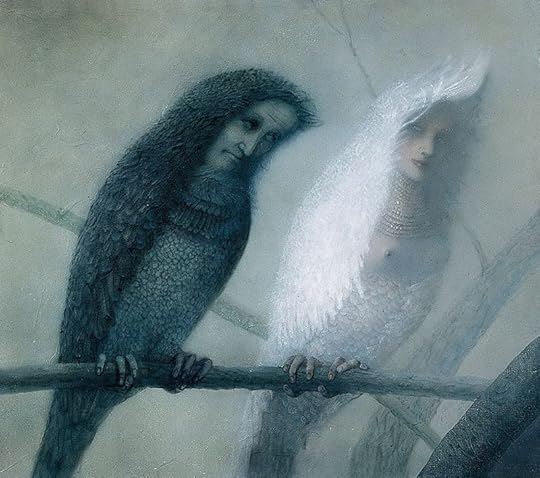
"I'm inspired by dreams and shadows, obsession and desire. By nature, I'm a dream collector and never stop working. I question people about their weirdest dreams and the strangest, most inexplicable experiences they've had. All this information whirls around in my mind, and new dreams emerge that form the seeds of stories and novels." - Storm Constantine
"To be entranced, to be driven, to be obsessed, to be under the spell of an emerging, not quite fully 'comprehended' narrative -- this is the greatest happiness of the writer's life even as it burns us out and exhausts us, unfitting us for the placid contours of 'normality.' " - Joyce Carol Oates
The dream-like imagery today is by Julia Gukova, a Russian painter and illustrator based in Moscow. She studied at the Krasnopresnenskaya Visual Arts School and Moscow State University of Printing Arts, and has worked as a painter and graphic designer since the late 1980s. Gukova has illustrated over forty books for publishers in Russia and abroad, including Alice in Wonderland, The Wizard of Oz, The Mole's Daughter, The Blind Fairy, Peter and the Wolf, and The Legendary Unicorn.
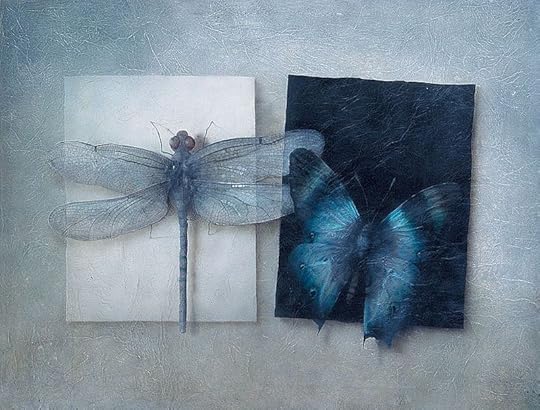
Sweet dreams, everyone. See you Monday.
Terri Windling's Blog
- Terri Windling's profile
- 708 followers


